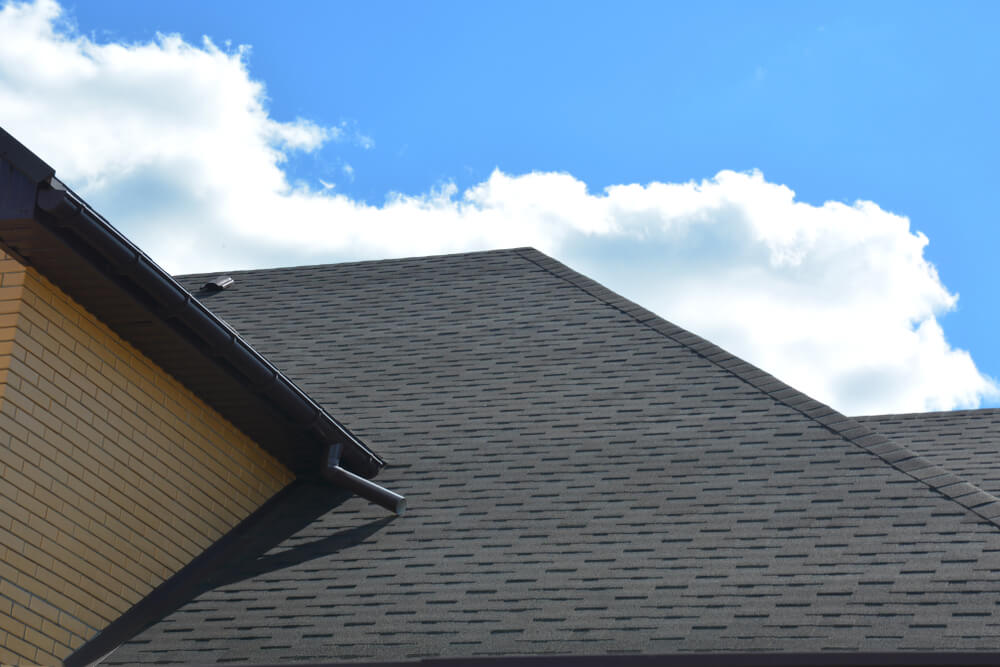Homeowners who are considering renovations or building a home have lots of questions about the best type of roof for their home. Choosing the right roof is an important decision because it impacts your budget, curb appeal, insurance costs, and ongoing maintenance expenses.
One question we commonly get is, “What is a hip roof?” Here’s a guide to hip roofs to help homeowners decide if it’s the right roof for them. Contact My Roof Pro with questions about the best roof for your Texas home.
What Is a Hip Roof?
A hip roof is a roof where all sides slope downwards and there are no flat faces or gables. A hip roof has no vertical edges.
Hip roofs get their name from the angles where the sides meet. These angles are called hips.
Some common types of hip roofs are:
- Pyramid or Pavilion: A pavilion roof is the simplest type of hip roof. It has four sloping sides that meet at a single peak at the top. It looks like a pyramid.
- Mansard: A mansard roof has two slopes on each side. The bottom part of the roof has a much steeper slope than the top part.
- Tented: A tented roof is a multi-sided hip roof with steeply pitched slopes.
- Hip and Valley: A hip and valley roof is a modified hip roof where the roof forms a “T” or “L” instead of a rectangle or square. A hip and valley roof has sections where two roof planes meet and form a valley.
Hip roof designs are popular in Southern and mid-Atlantic regions and are commonly seen in cottages, bungalows, and Georgian-style homes.
What Are the Benefits of a Hip Roof?
While hip roofs can be complex to build, they offer some distinct advantages for homeowners. The primary advantages of hip roofs are:
- Stability. Weight is evenly distributed with hip roofs, making them more stable than other designs. Additionally, the design is self-bracing so they require less bracing than other styles of roofs. The stability of hip roofs reduces the risk of damage from rain, snow, and wind.
- Drainage. The sloping sides of a hip roof allow water to effectively drain. This reduces the risk of leaks and minimizes the stress on the roof.
- Consistent eaves and gutters. Hip roofs have consistent eaves and gutters around the entire home, making maintenance easier.
- Curb appeal. The design of hip roofs offers attractive curb appeal.
- Flexibility. Hip roofs can be combined with other roof styles to create an ideal roof design.
While hip roofs offer several benefits, the most important one is sturdiness. Hip roofs are a good option for homes in areas at risk of hurricanes or tornadoes.
How Does a Hip Roof Affect Insurance Rates?
Because of their sturdy design, hip roofs can lower insurance rates. Hip roofs are resistant to wind, making them the preferred roof design for insurance companies. In fact, in some areas of the country, a hip roof can reduce insurance premiums by as much as 32%.
Hip roofs are the best roof for areas with hurricanes. Their symmetrical shape, moderate pitch, and strong support make them the best design for homes in areas with hurricanes.
Contact My Roof Pro for a Free Quote
Hip roofs are a popular choice for Texas homes because they do well in high winds, tornadoes, and hurricanes. While they can be more complex and expensive to build, they usually lead to reduced maintenance expenses and insurance premiums.
To learn more, contact My Roof Pro. Our team of expert roofers can answer any questions you have and help you decide what type of roof is right for you.
Call us today to schedule a free consultation or visit our Austin or San Antonio offices.

